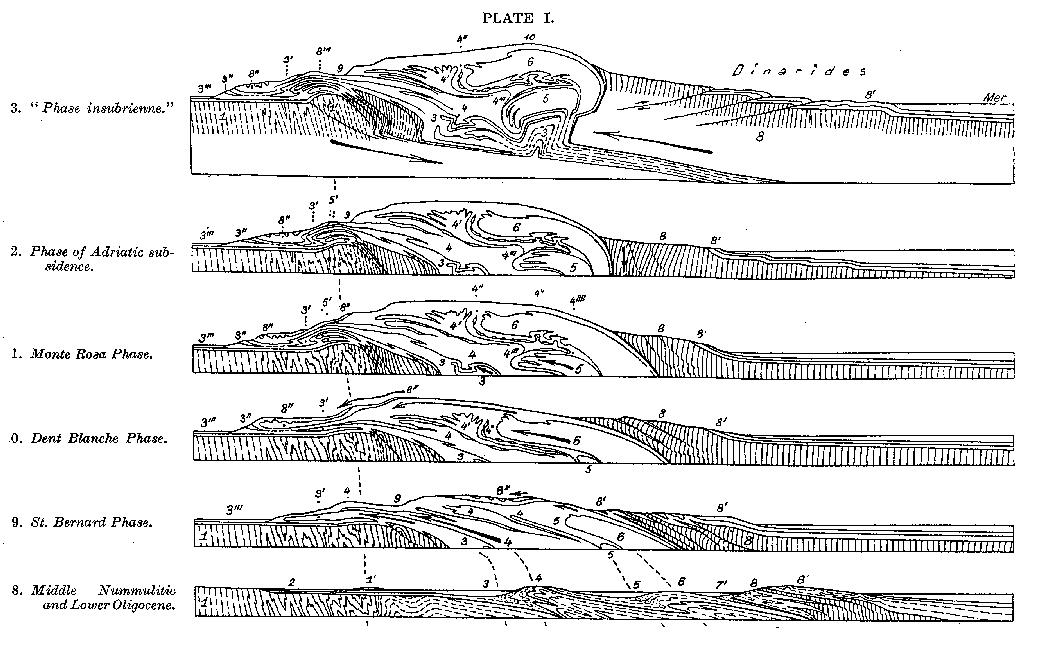
It has been known for about 100 years that collision mountain belts like the Alps are the products of significant lateral relative motions. For Argand the Alps are formed from rocks caught up in the jaws of a great vice, the sides of which are represented by the main parts of France on the NW side and Italy to the SE. However, most text-book descriptions of the structural geology of the highly deformed inner parts of mountain belts tend to emphasise the complexity of deformation. This is understandable given the patterns of refolded folds seen in outcrops and indeed, as were sketched out by Argand. Getting accurate descriptions of this complexity is clearly quite a challenge. This used to involve the separation of different folding phases and their correlation between outcrops, maybe even over the whole mountain range. However, of greater importance are the deductions of deformation kinematics - essential to reconstruct the relative motions between the "vice jaws". To achieve this, information is needed on the orientations of stretching lineations. Notice that Argand's view was that the Alps formed by the progressive imposition of folding events (his "phases") so that the original collision geometry (not that he used this term) has been severely modified by later deformations as the vice tightens its grip.
A note to conclude. Alpine geology is greatly complicated and confused by a plethora of local and regional names for suites of rocks, grouped together on tectonic and/or stratigraphic grounds. These names are kept to a minimum here - except where their use helps in understanding classic parts of Alpine geology.
The diagrams below are Argand's view of Alpine evolution. They are reproduced at a scale greater than most screen sizes so that the detail is retained. You may need to scroll across and down to see the whole picture......

Emile Argand's classic view of Alpine evolution seen in stages in cross-section (oldest at the bottom, youngest at the top). Originally published in 1916, these diagrams have influenced generations of Alpine and other orogenic geologists. These diagrams were reproduced by Collet in the 1920s.